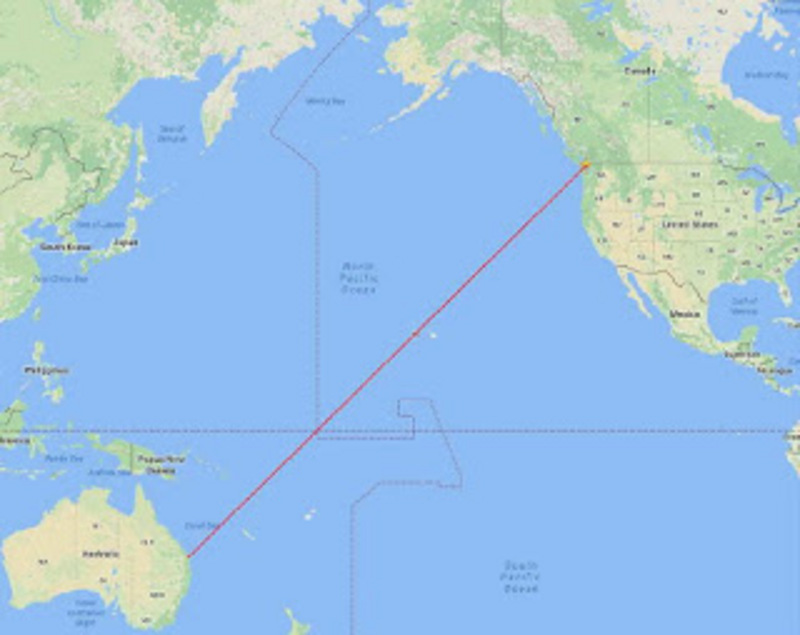From the WIA, original post here.
Date : 21 / 09 / 2016
Author : Jim Linton – VK3PC
Experimentation and pushing the boundaries paid off for two radio amateurs Steve McDonald VE7SL in Canada and Roger Crofts VK4YB Queensland, who made a two-way digital contact in the JT9 mode. This path is the longest two-way QSO on the 472-479 kHz band, which was granted as a secondary allocation to the amateur service at the World Radiocommunication Conference in 2012.
The JT9 contact in the WSPR QSO mode was at 1319z on Thursday 15 September, about 30 minutes before Canada’s sunrise with the sky surprisingly bright. Steve VE7SL says he and Roger VK4YB worked each other on 630m, the exact frequency being 475.300 kHz. He says: “This is the first-ever two-way QSO between North America and Australia on the relatively new 630m band. It presently represents the furthest two-way contact on this band, worldwide, but I don’t expect this record will last very long once the United States gets the band.”
The distance using the latitude and longitude values of each station rather than Maidenhead locators, the precise distance is 11,822 km. The Canada end of the contact was at Mayne Island, British Columbia, and had to travel over a distance before reaching the open Pacific. Steve VE7SL predicts that the station at the VK4YB is very capable of reaching much further afield. With his new antenna, transverter and amplifier it seemed that with Roger VK4YB, full advantage of Trans-Pacific propagation could be realised, although the path has not been at its best yet. Ironically the transverters used at both ends were of the VK4YB design, made in Queensland, and will be reviewed by Justin Giles-Clark VK7TW, in Amateur Radio magazine.
The pair showed persistence by watching the pre-dawn Trans-Pacific propagation. Roger VK4YB used an experimental 630m band antenna at his QTH in Moorina, a small rural suburb 39 kilometres north of Brisbane in the Moreton Bay Region. Before the two-way contact he seemed to be the only VK on 630m WSPR mode seen in Canada. Roger VK4YB says propagation had been doubtful but on the last attempt on the day the historic contact with Steve VE7SL was achieved. Others had made earlier contacts over shorter distances on the 7-kHz-wide band just below the broadcast AM band, using mainly digital techniques although there have been some SSB, CW and beacon activity occurring.
Writing on his blog Steve VE7SL hoped the historic contact will inspire new interest in the band. His advice, particularly to new users, is that it seems that the main mode of two-way communications is CW or JT9, and a simple transverter would allow both modes as well as the use of the WSPR beacon mode.
Here’s VK4YB’s new antenna (click for the full size image):


